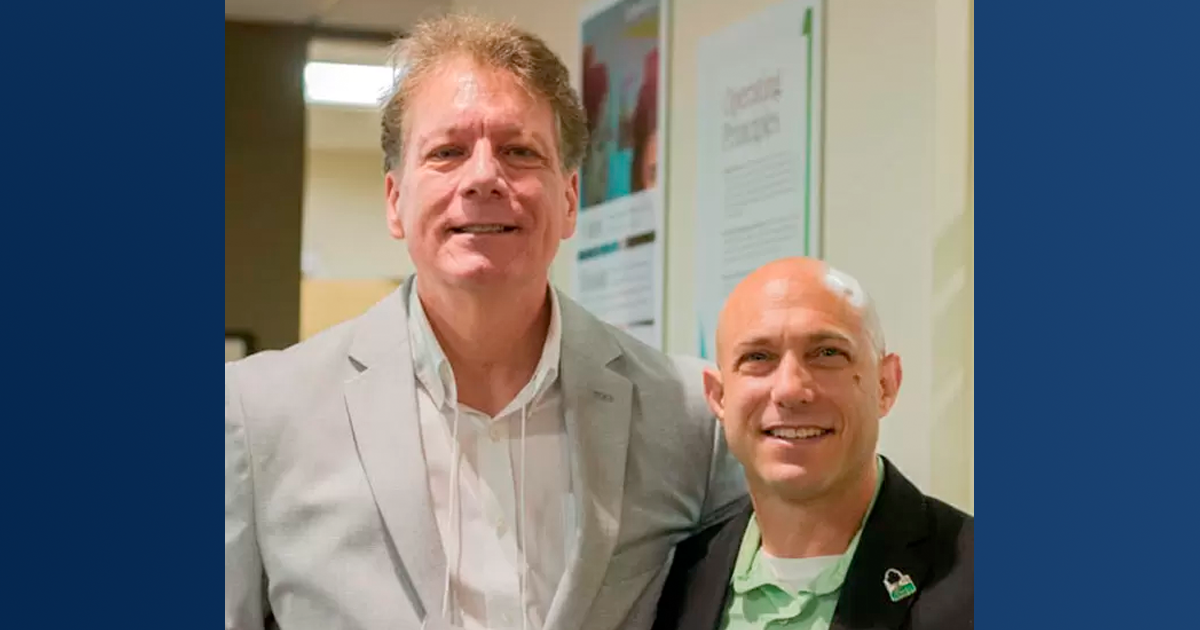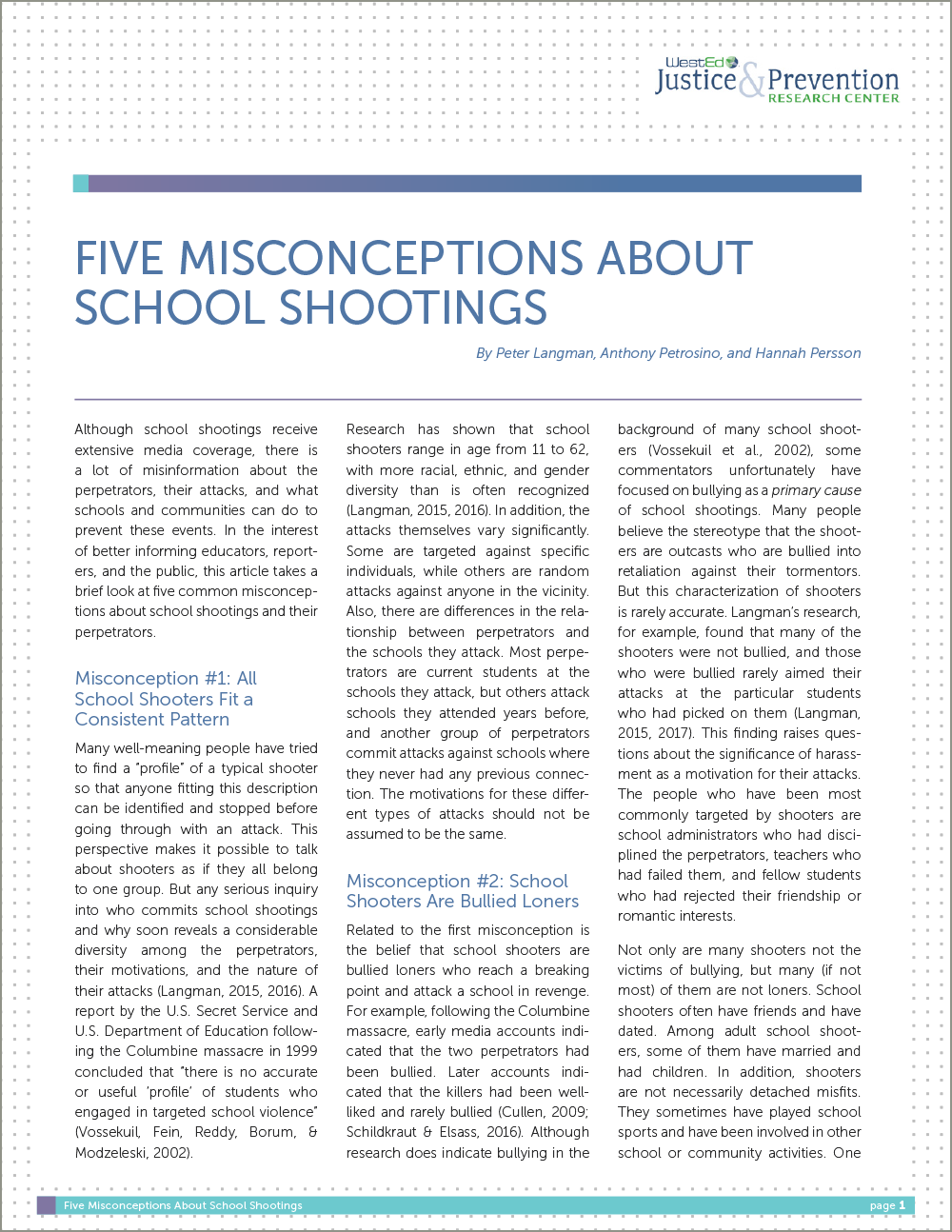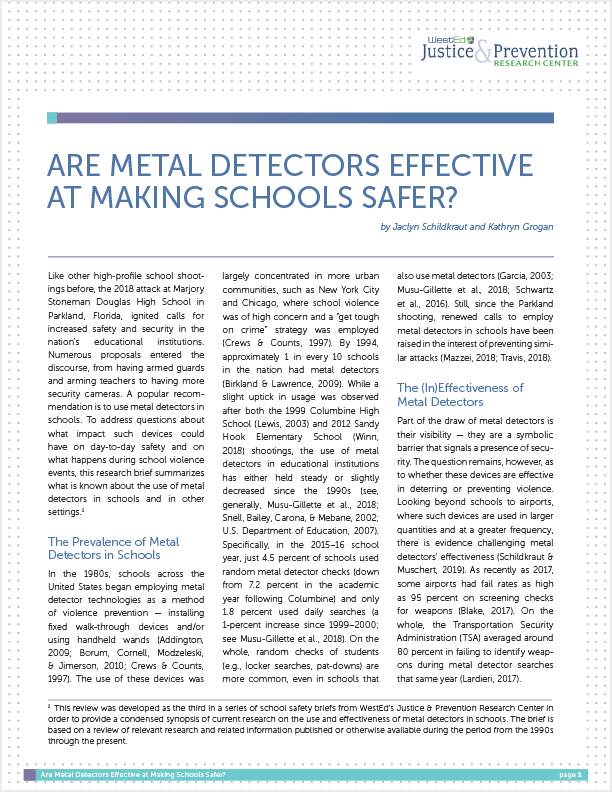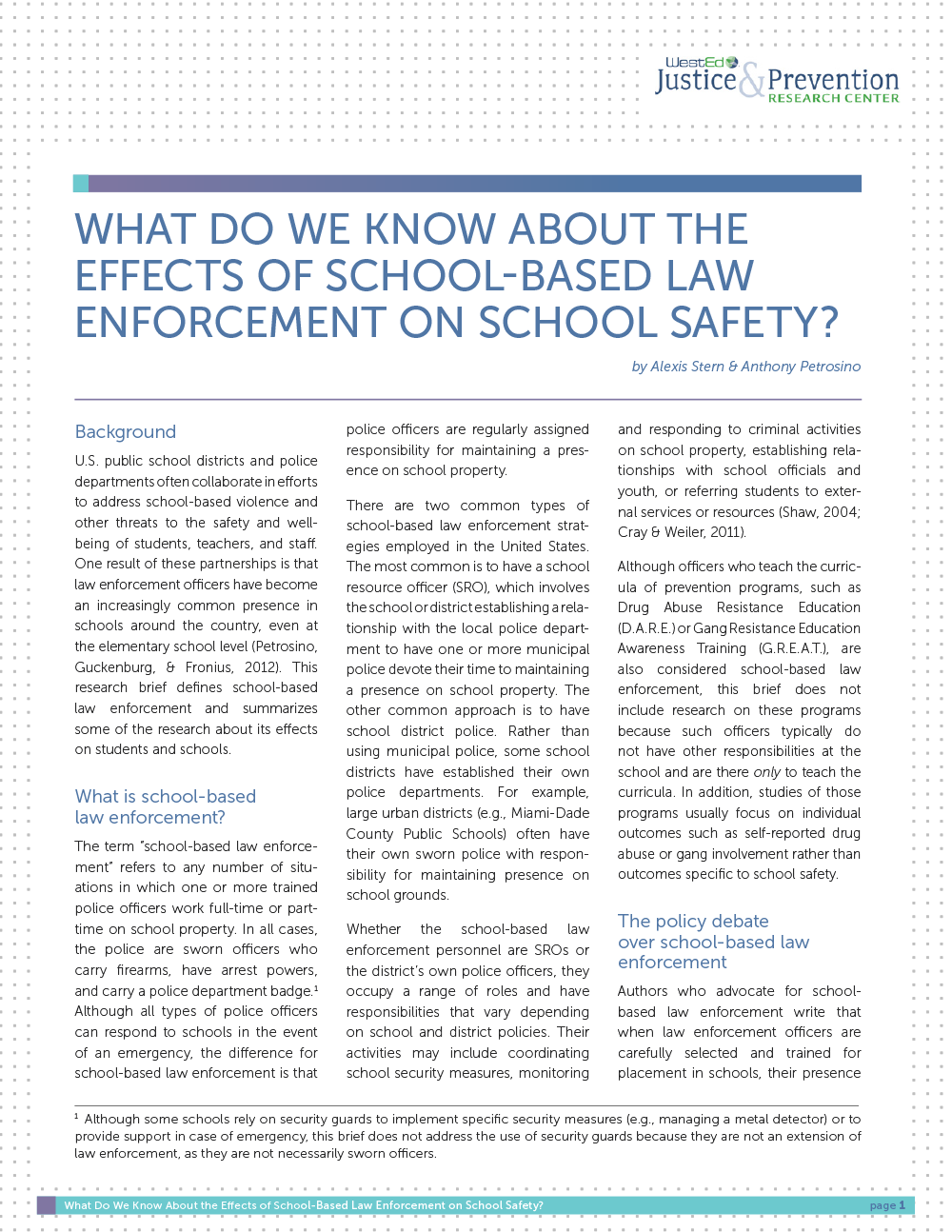Remembering WestEd Justice & Prevention Research Center Advisor, Dr. Jeremy Richman, 1969–2019
Posted on

This post is written by Anthony Petrosino, Director, and Pamela MacDougall, Coordinator, of the WestEd Justice & Prevention Research Center.
Earlier this year, on May 26th, a memorial service was held in Newtown, Connecticut, for Dr. Jeremy Richman, who died by suicide on March 25th. Jeremy, who served as an advisor to the Justice & Prevention Research Center (JPRC), was commonly referred to by the news media as a “Sandy Hook Dad.” He and his wife, Jennifer Hensel, lost their daughter Avielle in the massacre at Sandy Hook Elementary School on December 14, 2012. At the time, Avi, as she was affectionately known, was their only child.
During the May memorial service for Jeremy, speakers referred to the day of the Sandy Hook shooting as “12–14,” and separated both Jeremy’s life and their own into two parts: before 12–14 and after 12–14. It was on that “cold and dark December day” as Jeremy once put it, that Avielle, 19 of her classmates, and six of their educators were murdered in less than 11 minutes. So many lives were changed during those moments.
Any time someone dies at the relatively young age of 49, it’s a tragedy. That Jeremy died by suicide is especially devastating because it leaves so many unanswered questions. Those of us who knew Jeremy questioned whether we could have made a difference by reaching out with a phone call or initiating some other act of kindness. But his wife Jennifer noted that Jeremy had been in anguish since the loss of their daughter on 12–14 and had finally succumbed to that grief. Jeremy’s death speaks to the incredible toll that violence takes not just on its direct victims but on the many others who are impacted in its wake, especially family survivors. To call further attention to the needs of family survivors of homicide, and to honor Jeremy, the JPRC is planning a special event at the American Society of Criminology Annual Meeting this November.
What we remember about Jeremy is his incredible passion for making a difference, his boundless enthusiasm, his fearlessness in truth-telling, and his authentic compassion for others. These characteristics are what make his suicide so hard to accept and even harder to understand. He did so much but had so much more to do.
Jeremy was an accomplished neuroscientist. He held a bachelor’s degree in molecular and cellular biology, and a doctorate degree in pharmacology and toxicology from the University of Arizona. Before 12–14, he worked for several years at Boehringer Ingelheim, a pharmaceutical company, where his primary task was to help develop drugs to combat depression and Alzheimer’s. He was also a Faculty Lecturer in the Department of Psychiatry at Yale University’s School of Medicine.
After 12–14, Jeremy and Jennifer, also a scientist, looked to science for answers about why violence, such as that confronted by their family, occurs. As Jeremy said, “We try to make sense of our worlds in an empirical fashion. So in the wake of the shooting and from our grief, we need to understand why we have lost our daughter, her classmates, her playmates, her caregivers. Do you know how many letters from children and teenagers my wife has received that simply ask why? Why or how can someone do such a horrific thing?” Shortly after their daughter’s death, they started the Avielle Foundation to educate others about brain health, particularly the role of the brain in the development of violence and aggression, as well as compassion and empathy.
One thing that impressed us immediately when we began engaging with Jeremy as an advisor to our Center was his commitment to changing the language about mental health. He advocated tirelessly to change “mental health” to “brain health,” because the stigma associated with “mental health” has kept many people from seeking help for fear they would be ostracized by others. It was Jeremy’s dream that having your brain examined would become normalized. As he put it, “People do not feel stigmatized getting their liver or their heart checked out. Treating the brain like the organ it is and getting help for it should also not be stigmatizing.” He told us that he tried hard to convince then-President Obama and Vice-President Biden to change the language in their sweeping Now is the Time (to end gun violence) from “mental health” to “brain health.” He was unsuccessful in convincing them, but he never gave up trying to convince people how important language is.
Jeremy had a way of taking a complex subject, such as brain science, and making it easy for everyone to understand. This was evident during his June 2015 presentation to WestEd’s Boston office. His presentation at WestEd was moving and enlightening. We had never heard a speaker with such a powerful opening statement: “I am coming before you today from two perspectives,” he said. “One is as a scientist. The other is as a crime victim.” And from that point on in his presentation, he weaved in those two perspectives to highlight brain science and the impact of violence on a family. Our JPRC colleague and Senior Research Associate Sarah Guckenburg closed the event by stating, “I want to start by saying you are a great teacher,” underscoring how Jeremy was able to make accessible complex neuroscience to an audience unfamiliar with it. In a later presentation at a Congressional Briefing on Violence in 2016, Jeremy argued for greater investment in learning more about the brain and its relationship to behavior; as he stated, “we need to make the invisible visible.” Among the many interesting facts Jeremy presented during his talk at the Congressional Briefing, one that has stayed with us is that there is currently more scientific knowledge about the surface of Mars than there is about the brain’s relationship to behavior.
The logo for the Avielle Foundation includes the words “you can imagine.” The logo was featured prominently on Jeremy’s slides and on the Foundation’s website. Jeremy used those words so prominently as a retort to the well-meaning folks who would say, “I can’t imagine what you and your wife are going through.” Jeremy’s point was that people can imagine it — the sadness and the shock of losing a child so suddenly and violently. He believed that it was only by imagining such loss and anguish that we would begin to take violence prevention more seriously.
Jeremy once told a reporter that he “got through life after Avielle by looking for something beautiful every day — a sunrise, a firefly, a piece of chewing gum. There’s always something beautiful even on the worst days if you look hard enough.” Maybe the beautiful things were no longer enough to counter his pain. But Jeremy’s life — and his death — give us an enduring motivation here at the Center to continue a relentless pursuit of reducing violence and promoting well-being through ongoing research, technical assistance, and policy support.



